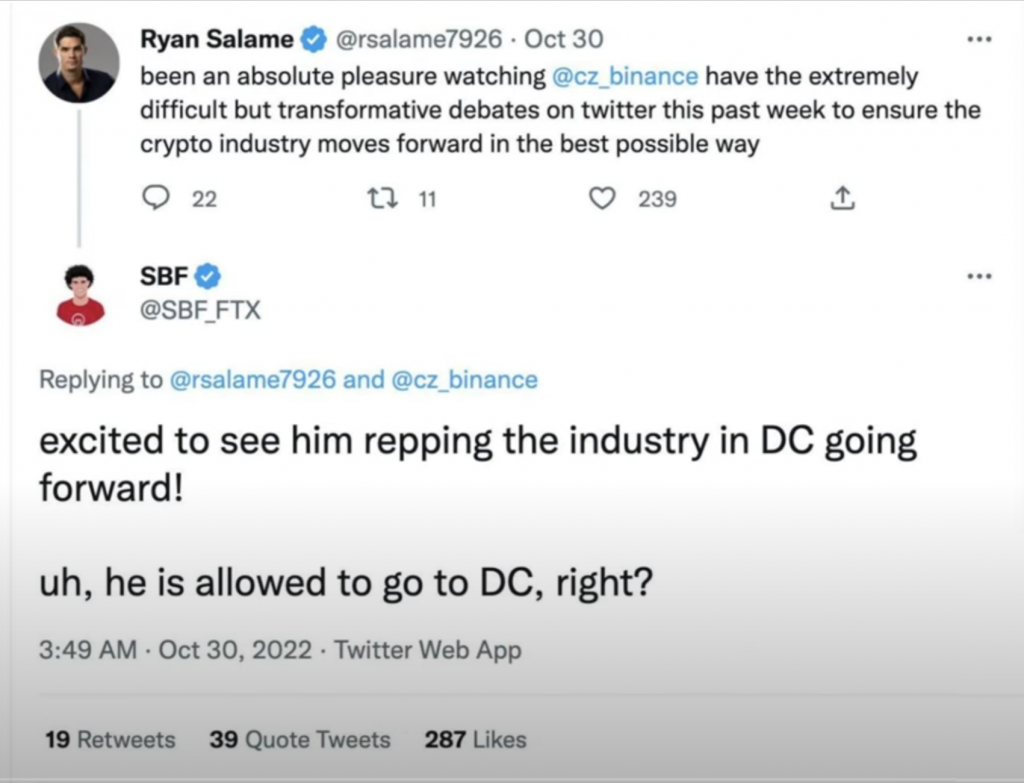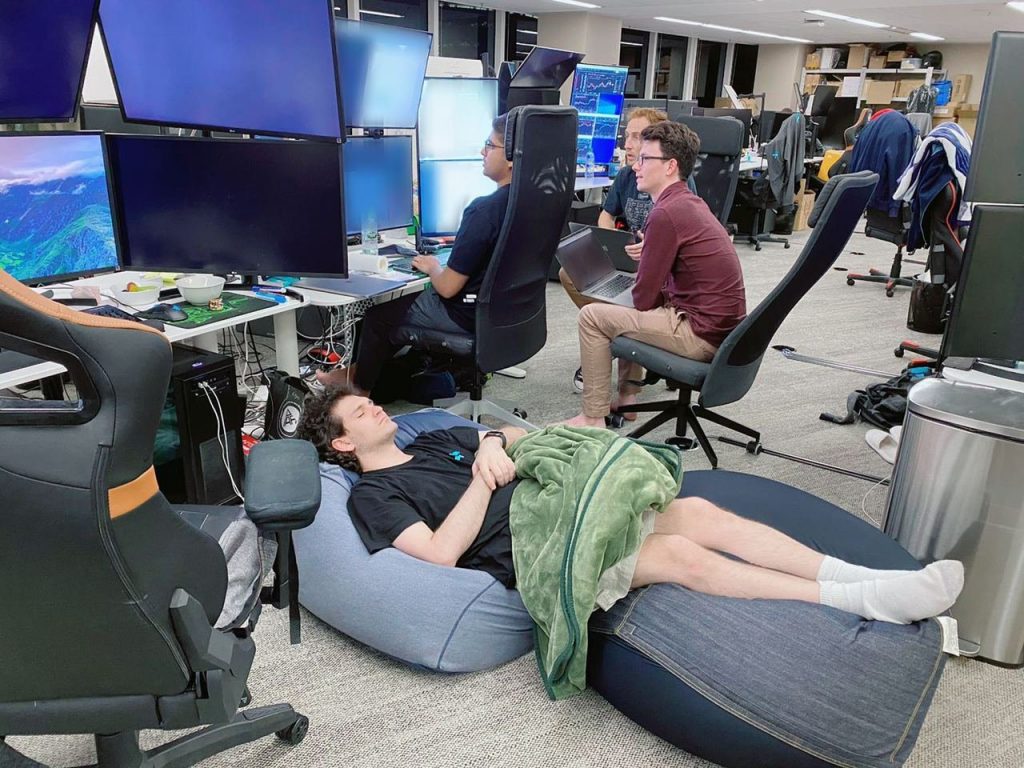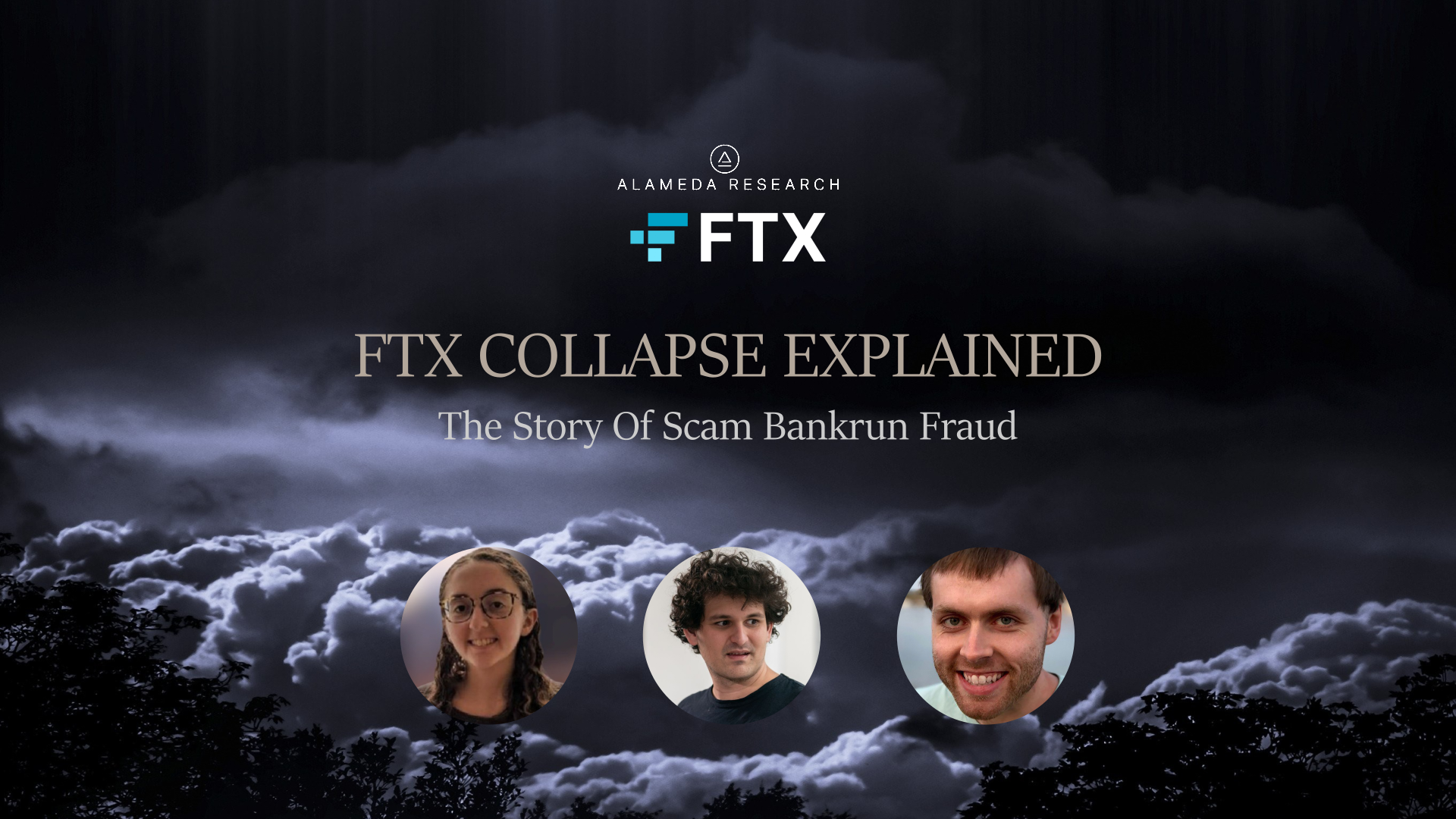In November 2022 the world’s second largest cryptocurrency exchange FTX collapsed, stopped withdrawals and filed for bankruptcy. The stories of the last week are so far-fetched they deserve a Netflix documentary. Here we will look at how FTX was able to defraud the crypto industry of somewhere in the region of $10 Billion US dollars.


SBF and CZ have a long history of animosity. They are founders and CEOs at the two largest cryptocurrency exchanges. CZ or Changpeng Zhao is CEO at Binance the worlds largest exchange where people go to swap one cryptocurrency for another. SBF or Sam Bankman Fried is CEO at FTX an exchange that launched in 2019 and became a major competitor.
But this isn’t just the story of two billionaires fighting, this story includes fraud, drugs and a financial scam like no other.
Binance vs FTX
At the start of this story CZ was a supporter of Sam and even invested $100m for 20% of his newly launched exchange. CZ was already familiar with Sam because he was trading large volumes on Binance. This was through Sam’s trading firm Alameda Research, they are an important part of this tale who we will come back to.

Alameda had some success in arbitrage trading, which is basically buying Bitcoin in one place and moving it to another where it sells at a higher price. This had been very profitable in the early days but edges and margins were getting cut out by new more sophisticated quant firms entering the crypto markets.
He decides that there is the opportunity to launch his own exchange and that Alameda will act as the main market maker to provide liquidity. FTX is born and it’s a huge success as the trading platform is better than anything else the crypto industry has seen.
Users flood to the platform depositing their cryptocurrencies and using it to trade and invest in various other cryptocurrencies and futures contracts. Alameda has access to all the data and is actively counter trading the users on FTX. To distance Alameda from FTX SBF splits the companies up into a group which allegedly contains 130 different legal entities. SBF focuses his attention on FTX growth and leaves Alameda’s trading arm to Caroline Ellison and Sam Trabucco.
By August 2021 FTX had grown into a major competitor to Binance and CZ wanted to sell his stake in the business. SBF agreed to purchase it with a deal valued at $2 billion which included half in FTX’s native governance token FTT. So CZ ended up owning a massive part of the circulating supply of FTX’s token.
Alameda Research
In an interview in 2021 Sam Trabucco explains how Alameda now not only does arbitrage trading but also is involved in yield farming and taking directional positions on the market. At the time Bitcoin and other cryptocurrencies are making new all time highs. The markets are good, profits are phenomenal and everything seems fine.

The culture at Alameda was kind of like a more degenerate Goldman Sachs. New recruits were encouraged to take stimulants and work 18 hours a day, 6 days a week. SBF was renowned for sleeping on the trading floor on a bean bag and playing computer games during meetings. The then co-CEO Caroline Ellison tweeted in May 2021 “nothing like regular amphetamine use to make you appreciate how dumb a lot of normal, non-medicated human experience is”.
Towards the end of 2021 market sentiment shifted as it so often does and prices started to decline. Bitcoin went from $68,000 to where it stands today at just over $16,000. During 2022 we saw the collapse of Terra and the $20 billion dollar stablecoin UST. This shook the industry and pushed one of the most prominent crypto native hedge funds Three Arrows Capital into insolvency.
In August Sam Trabucco stepped down as CEO of Alameda and bought a boat, presumably to explore international waters. Losses must have been mounting at this time because FTX was lending Alameda money, money from user deposits.
They were able to do this because their balance sheet showed billions of dollars in assets. However many of those assets were illiquid and held little reconcilable value. There was $5B of their own FTT token, another $5B in a relatively unused project called Serum. These weren’t the assets that were “loaned” to Alameda however.
Essentially FTX sent its users deposits to cover up a hole for losses from Alameda’s trading. Alameda was gambling with digital assets deposited by the users of FTX.
At this point it begs the question why would anyone do this? What mindset do you need to have to fall into this type of fraud and theft?
Sam Bankman Fried
Sam was born into a family of academics at Stamford and graduated with a degree in Physics from MIT. He got his first taste of trading at Jane Street Capital, a prop trading firm in traditional markets. In 2017 he left Jane Street and worked briefly at The Centre For Effective Altruism before he founded Alameda.
Sam’s mission was to contribute as much money as possible to effective altruism. He believed he had a higher purpose and his value to the world would be through his donations. Effective altruism is kind of like philanthropy for geeks and there are some wonderful organizations operating in this field such as givewell and givedirectly.
It has been speculated that Sam was able to justify his actions through the cause. His policy was “crypto or bust” and he believed he had the moral high ground for the worst deeds because of the wider commitment to philanthropy.
Sam was also active in US politics and was the second largest donor to the democrats during the Biden campaign. He appeared before congress and lobbied for regulations in the crypto sector. It was some of this lobbying that in fall of 2022 came back to haunt him.
CZ still owned a lot of FTX’s native governance token which was probably the most liquid significant asset on their balance sheet at the time. He had gotten wind of SBF lobbying for regulators to focus their attention on Binance which was in FTX’s interest as a competitor.
The person in charge of regulating the crypto industry in the US is Gary Gensler, chair of the SEC. He previously worked under Glenn Ellison at MIT who is none other than father of Alameda CEO Caroline Ellison. Probably not significant but conspiracy theorists will love it.
The FTX Fiasco
CZ, upset by what he sees as backstabbing in DC, decides to start selling his FTT on the market and tweets about it publicly. An optimist might claim this was for transparency while a cynical person would say that this was to give short sellers a heads up and create more selling pressure.
Caroline then steps in and asks if she can buy the entire position at market price which gets ignored.
The FTT token starts to plummet while rumours are circulating that FTX and Alameda might be insolvent. This causes a bank run like we have never seen in crypto markets. Within 24 hours nearly $6 billion dollars of digital assets had been withdrawn from the platform.
Withdrawals slowed down and then stopped completely as users were unable to get to their funds. At this point the writing was on the wall but SBF was silent publicly. In private it was rumoured that he was approaching anyone and everyone for a bail out package in the region of $6-8 billion.
At this point no one really believed what was happening. I’ve been working as a blockchain developer for 5 years and have seen all sorts go on but never anything like this. FTX was one of the most widely used, regulated and prominent organizations in the crypto sector. They were profitable to the tune of $1B a year just on trading fees alone. There was no reason for them to take unnecessary risks with users’ funds or to get themselves into this type of position.
Then on November 8th CZ and SBF tweeted simultaneously that Binance was looking to purchase FTX.com depending on due diligence. It was later suggested that Binance never had any intention of buying the exchange and the competition was already gone.
On November 10th the @FTX_official twitter account tweeted “Per our Bahamian HQ’s regulation and regulators, we have begun to facilitate withdrawals of Bahamian funds. As such, you may have seen some withdrawals processed by FTX recently as we complied with the regulators”
This was later denied by regulators and law enforcement in the region. What may have been insiders trying to get funds out, led to offers of $100,000 for anyone in the Bahamas with an FTX account from desperate traders.
At this point the FTT token had collapsed to around $3 from it’s peak above $80. Other assets on FTX’s balance sheet such as blockchain Solana’s native token were also depreciating fast.
By November 11th the deal had fallen through and FTX filed for chapter 11 bankruptcy. The filing states that there are more than 100,000 creditors and the amount owed exceeds $10 billion US dollars.
The assets would be frozen and a lengthy legal process would ensue… or so we thought.
FTX Hack Or Inside Job
On November 12th assets from Alameda’s wallets started to move.
There were unusual transactions which looked like they were trying to consolidate funds and avoid censorship at any cost. It was reported that a hacker had stolen over $400m in digital assets. This was obviously being done manually by someone that didn’t have technical skills to efficiently trade large positions.
Someone had access to the FTX private keys and was escaping with the funds. Was this really a hack or was an insider trying to make one last ditch effort to give it all to effective altruism?
At time of publishing Sam Bankman Fried’s whereabouts is unknown and the funds haven’t been recovered…


